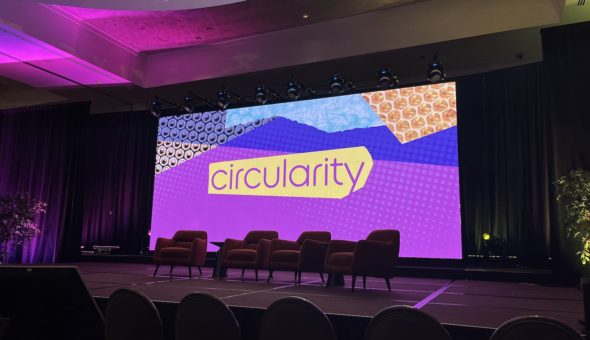In December, CSCT students Helena Quilter (cohort 5), James Tyson (cohort 3) and Ben Hodges (cohort 2) travelled to Glasgow for MASC 2013 to find out what’s new in the world of macrocyclic and supramolecular chemistry. Helena brings us this report.
On the 16-17 December 2014, over 250 delegates descended on Glasgow University for the annual MASC group meeting. The Pascu group from Bath were there in force, with all 10 members attending the two-day event. With 15 invited speakers - including 5 plenary talks - and 15 flash presentations from young researchers there was just too much exciting chemistry to mention here, so I’ll just talk about my highlights from the event.

We got off to a great start with Dr Steve Goldup of QMUL speaking about his group’s research into rotaxanes as molecular machines. These intriguing molecules are mechanically-interlocked molecular structures consisting of a “dumbbell-shaped” molecule threaded through a macrocycle. In this case, Dr. Goldup’s research investigates the chiral and optical properties of these types of supramolecular structures.
Our first plenary speaker was Professor Marcella Bonchio of Padova, Italy, who spoke of her exploits into mimicking photosynthesis to catalyse water splitting for hydrogen production. A truly inspirational speaker!
The flash 15-minute presentations provided some light relief between the longer talks. Day 1 highlights included Guillaume De Bo (Manchester), who showed some very impressive animations of his rotaxanes operating on polymeric tracks, and S. M. Bromfield (York), who spoke of his development of non-toxic heparin binders to replace the clinical use of highly charged protamine, which is currently used to remove heparin to allow blood clotting after surgical procedures.

The second day began with complementary Irn Bru for anyone feeling worse for wear after the conference dinner the night before and back to back imaging talks from Dr Zoe Pikramenou (Birmingham) and Bath’s very own Dr Sofia Pascu. Dr Pikramenou’s talk concentrated on nanoscale luminescent probes whilst Sofia spoke about the efforts in my research group to design supramolecular structures involving the non-covalent interactions between carbon nanomaterials and fluorophores such as metalloporphyrins and naphthyldiimides (NDIs). Both speakers were highlights of the conference for me!
A speaker I found very inspiring was Dr Louise Natrajan (Manchester) talking about her group's efforts to understand electronic and physical properties of actinide coordination complexes to help understand how to treat nuclear waste.
Towards the end of the conference was the excellent Professor Harry Anderson (Oxford) talking about his incredible templated synthesis of nanorings containing 24 porphyrin units. It was suggested that these beautiful structures could have some place in light-harvesting systems. Very cool chemistry!
This was the first conference I’ve attended – and presented a poster at! I found the whole experience very inspiring (and nerve-wracking to talk about my own research), particularly hearing other young researchers talk about their work. Some of the research seemed alien to me as the research seemed to have no obvious application, but it was refreshing to hear about people doing research for the sake of finding something incredibly cool.
Respond


